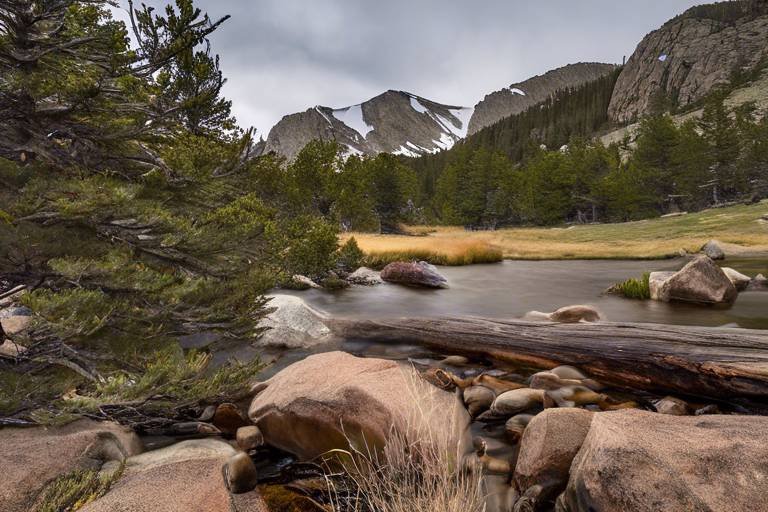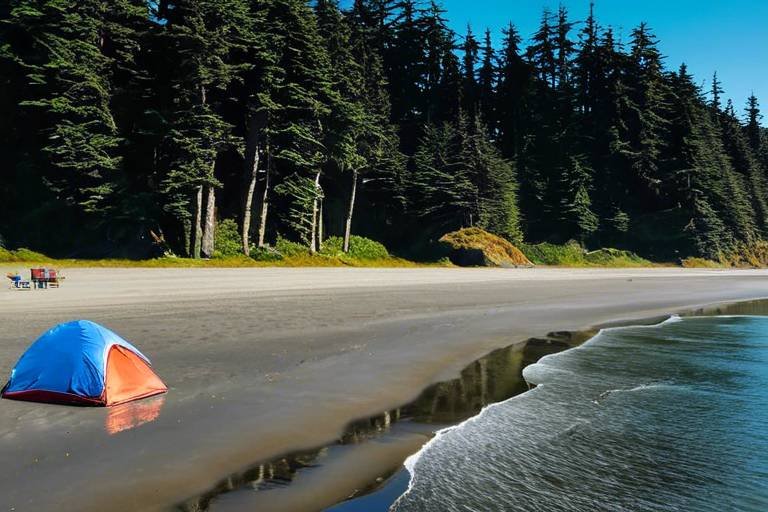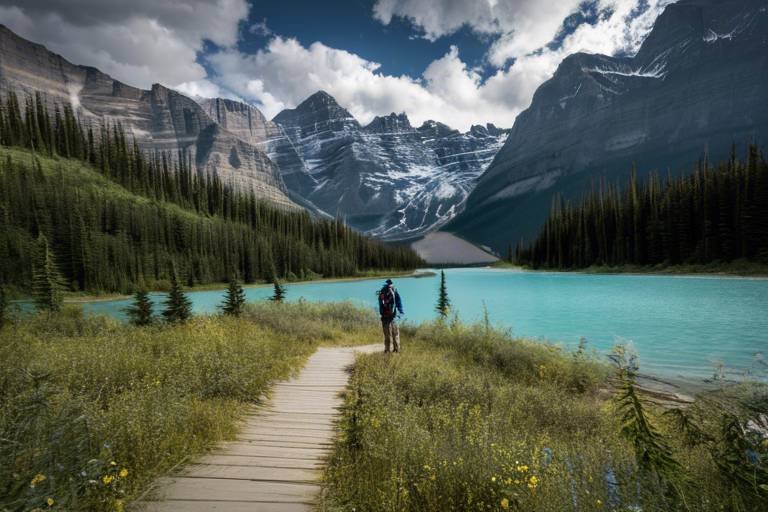Exploring the Desert Wonders of Death Valley National Park
Embark on a journey to discover the mesmerizing wonders of Death Valley National Park, a place where nature's extremes collide to create a breathtaking spectacle. This vast expanse of land, known for its scorching temperatures and arid landscapes, holds a treasure trove of geological marvels, unique flora and fauna, and a climate that challenges all notions of survival.

Geological Marvels
Discover the unique landscapes, extreme temperatures, and diverse flora and fauna of Death Valley National Park, one of the hottest and driest places in North America.
When it comes to geological marvels, Death Valley National Park doesn't disappoint. The park is home to stunning rock formations that have been shaped by millions of years of natural forces. One of the most iconic sights is the Mesquite Flat Sand Dunes, vast expanses of golden sand that seem to stretch on forever. These dunes are not only visually captivating but also play a crucial role in the park's ecosystem, providing habitat for unique plant and animal species.
Another geological wonder worth exploring is the colorful Artist's Palette. This vibrant area showcases a kaleidoscope of hues, ranging from deep reds to vibrant purples, created by various mineral deposits in the rocks. It's like nature's own painting, a masterpiece that highlights the park's geological diversity and history.

Extreme Climate
Discover the unique landscapes, extreme temperatures, and diverse flora and fauna of Death Valley National Park, one of the hottest and driest places in North America.
Learn about the park's stunning rock formations, including the iconic Mesquite Flat Sand Dunes and the colorful Artist's Palette.
Explore the record-breaking temperatures and harsh conditions that make Death Valley a land of extremes.
Understand the wide temperature differentials experienced in the park, from scorching daytime heat to chilly nights.
Discover the unique landscape of Badwater Basin, the continent's lowest point at 282 feet below sea level.
Encounter the surprising variety of plant and animal life that has adapted to thrive in this arid environment.
Learn how plants and animals have evolved to survive in the harsh desert conditions of Death Valley.
Explore the park's diverse wildlife, including the elusive desert bighorn sheep and the endangered Devil's Hole pupfish.
Death Valley's extreme climate sets it apart as one of the most challenging environments on Earth. The scorching heat during the day can reach staggering temperatures, while the nights bring a stark contrast with chilly winds sweeping through the desert. These extreme temperature fluctuations create a dynamic and unforgiving atmosphere that tests the limits of both nature and visitors alike.

Temperature Fluctuations
When exploring Death Valley National Park, one of the most fascinating aspects to experience is the dramatic that occur within a single day. The scorching heat of the daytime can reach blistering levels, often exceeding 120 degrees Fahrenheit, creating a stark contrast to the surprisingly cool evenings. As the sun sets behind the rugged mountains, the desert quickly sheds its daytime warmth, plunging the park into a chilly night where temperatures can drop significantly. This extreme shift from intense heat to coolness showcases the remarkable resilience of life in the desert, where adaptation is key to survival.

Lowest Point in North America
Located within Death Valley National Park, Badwater Basin holds the title of being the lowest point in North America, sitting at a staggering 282 feet below sea level. This unique landscape is a vast salt flat that stretches for miles, offering a surreal and mesmerizing sight to visitors. The basin's salt flats are formed from the evaporation of a temporary lake that once covered the area, leaving behind a crust of salt minerals that shimmer in the sunlight.
Visitors to Badwater Basin can walk out onto the salt flats and marvel at the expansive views of the surrounding mountains that rise dramatically from the valley floor. The contrast between the bright white salt flats and the rugged peaks in the distance creates a striking visual panorama that is truly unforgettable. The sheer vastness of the basin and the feeling of standing at the lowest point in North America evoke a sense of awe and wonder at the forces of nature.
Despite its harsh and inhospitable conditions, Badwater Basin is teeming with life in the form of microscopic salt-tolerant organisms that thrive in the extreme salinity of the water that occasionally surfaces in the basin. These unique life forms play a crucial role in the ecosystem of the area, showcasing the resilience and adaptability of nature in even the most challenging environments.

Flora and Fauna
Discover the unique landscapes, extreme temperatures, and diverse flora and fauna of Death Valley National Park, one of the hottest and driest places in North America.
Learn about the park's stunning rock formations, including the iconic Mesquite Flat Sand Dunes and the colorful Artist's Palette.
Explore the record-breaking temperatures and harsh conditions that make Death Valley a land of extremes.
Understand the wide temperature differentials experienced in the park, from scorching daytime heat to chilly nights.
Discover the unique landscape of Badwater Basin, the continent's lowest point at 282 feet below sea level.
Encounter the surprising variety of plant and animal life that has adapted to thrive in this arid environment.
Learn how plants and animals have evolved to survive in the harsh desert conditions of Death Valley.
Explore the park's diverse wildlife, including the elusive desert bighorn sheep and the endangered Devil's Hole pupfish.

Desert Adaptations
Desert Adaptations in Death Valley National Park showcase the remarkable resilience of plant and animal life in the face of extreme aridity and temperature fluctuations. One of the most striking adaptations is the ability of certain plants, like the creosote bush and the desert holly, to conserve water by minimizing leaf surface area and maximizing root systems that can reach deep into the ground in search of moisture. These plants have also developed mechanisms to prevent water loss through transpiration, such as waxy coatings on leaves or opening stomata during the cooler nights to reduce evaporation.
Furthermore, the wildlife in Death Valley has evolved various strategies to survive in the harsh desert environment. The desert bighorn sheep, for example, has specialized hooves that provide traction on rocky terrain and allow them to navigate steep cliffs in search of food and water. These sheep can also go extended periods without drinking water, obtaining moisture from the plants they consume. Another fascinating adaptation is seen in the kangaroo rat, which can survive without ever drinking water, obtaining all the moisture it needs from its food and producing highly concentrated urine to conserve water.

Rare Species
In the vast expanse of Death Valley National Park, where the sun beats down relentlessly and the landscape appears inhospitable, a surprising array of rare species call this harsh environment home. Among the unique wildlife that has adapted to thrive in this extreme setting, the elusive desert bighorn sheep stands out as a symbol of resilience. These magnificent creatures navigate the rugged terrain with grace, their impressive horns a testament to their ability to survive in the arid desert.
Another fascinating inhabitant of Death Valley is the endangered Devil's Hole pupfish, a species found only in a single, isolated pool within the park. With its iridescent scales and delicate fins, this tiny fish has captured the attention of researchers and conservationists alike, as efforts are made to protect its dwindling population. The existence of such a specialized and unique species in this unforgiving environment serves as a reminder of the delicate balance of nature and the importance of conservation efforts.
Frequently Asked Questions
- What is the best time of year to visit Death Valley National Park?
The best time to visit Death Valley is during the fall and spring months when temperatures are milder and more comfortable for exploring the park.
- Are there any safety tips to keep in mind when visiting Death Valley?
Yes, it's important to stay hydrated, wear sunscreen, and be prepared for extreme heat and sudden temperature changes. Always carry extra water and let someone know your itinerary before venturing into the park.
- What are some must-see attractions in Death Valley National Park?
Don't miss the Mesquite Flat Sand Dunes, Badwater Basin, Zabriskie Point, and the colorful Artist's Palette for stunning natural beauty and unique geological formations.
- Can I see wildlife in Death Valley?
Yes, Death Valley is home to a variety of wildlife, including desert bighorn sheep, coyotes, and reptiles. Keep a respectful distance and observe from afar to enjoy these creatures in their natural habitat.
- What activities can I enjoy in Death Valley National Park?
You can go hiking, stargazing, birdwatching, and even take scenic drives to explore the diverse landscapes and attractions within the park. Be sure to check for any ranger-led programs or events during your visit.



















